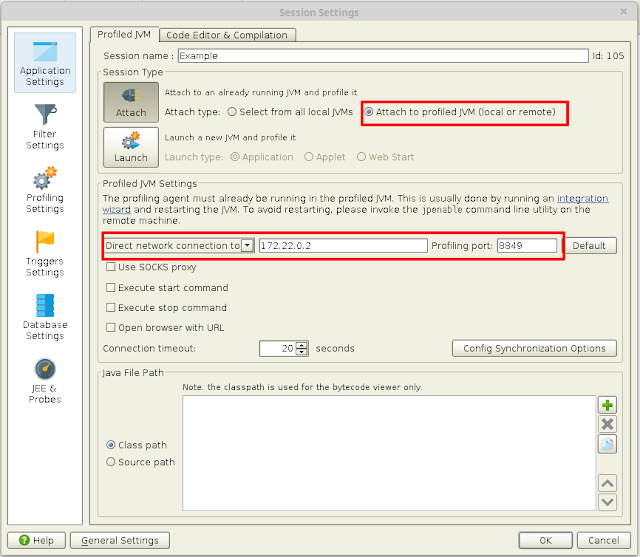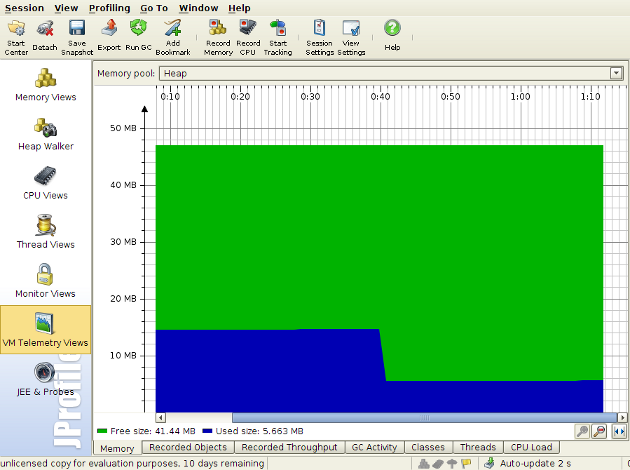

Now you can profile your application and analyze the results, without leaving your IDE. It uses the built-in functionality of the JVM to save an HPROF snapshot that can be openedīy JProfiler and does not require the profiling agent to be loaded.IntelliJ IDEA Ultimate has out of the box support for profiling your applications using multiple Profilers. HTML reports from previously saved snapshots.Ī low-overhead way of obtaining a heap snapshot from a running JVM is to use the bin/jpdumpĬommand line tool. bin/jpexport and bin/jpcompare can be used to extract data and create For automated processing, the command line tools


Snapshots can be opened and compared in the JProfiler UI. Snapshots are either saved manually in the JProfiler UI or automatically by trigger actions. While the JProfiler UI can show live profiling data, it is often necessary to save snapshots of all recorded This is called "offline profiling" in JProfilerĪnd is useful for automating profiling sessions. Way the profiling agent can operate in unattended mode. Yet another way to control the profiling agent is with a predefined set of triggers and actions. As an alternative to the UI, the profiling agent can be controlled through itsĪ command line tool that uses this MBean is bin/jpcontroller. On the local machine or on a remote machine - the communication mechanism between the profiling agent and theįrom the JProfiler UI, you can instruct the agent to record data, display the profiling data in the UI and This means that it is actually irrelevant if the profiled JVM is running The JProfiler UI is started separately and connects to The JProfiler agent only collects the profiling data. May have to be retransformed in order to apply the required instrumentation. In that case, a substantial number of already loaded classes JProfiler can load the agent into an already running JVM, either by using the JProfiler UI, or with the Profiling agent instruments classes as they are loaded and inserts its own bytecode to perform its measurements. Some of these events directly deliver profiling data. Once loaded, the profiling agent asks the JVMTI to be notified of all kinds of events, such as thread creation agentpath VM parameter, the profiling agent is either loaded successfully or the JVM does not JProfiler> so you know that profiling is active. JProfiler will then print a couple of diagnostic messages prefixed with If the JVM succeeds in loading the native library, it calls a special function in the library to give the profilingĪgent a chance to initialize itself. Important to know that this is what enables profiling. You rarely have to add this parameter manually, because JProfiler will add it for you, forĮxample in an IDE integration, an integration wizard or if it launches the JVM directly. To load it at startup, a VM parameter -agentpath: is added to theĬommand line. JProfiler supports a range ofĪ JVM profiler is implemented as a native library that is loaded either at startup or at some point later on.
JPROFILER ALREADY RUNNING SERVICE CODE
Implemented as native code and so a JVM profiler is not platform-independent. This means that at least part of the profiling agent must be

The "JVM tool interface" (JVMTI) is a native interface that a profiler uses to gain access to information andĪdd hooks for inserting its own instrumentation.
JPROFILER ALREADY RUNNING SERVICE OFFLINE
Remote or local local Profiled JVM JProfiler MBean jpcontroller publishes connects via socket connects via JMX loads with -agentpath controls with offline profiling jpenable jpdump Command line arguments jpexport jpcompare jpanalyze transmits data takes HPROF heap dump loads via attach JProfiler agent Snapshots loads the profiling agent profiling data controls recording command line tool process component data JProfiler UI The profiling agent


 0 kommentar(er)
0 kommentar(er)
